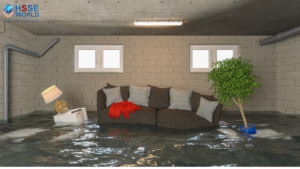Improving Emergency Fire Response by using Technology
4 min read[vc_row][vc_column][vc_column_text]Every once in a while, local emergency services groups (firefighters, police officers, paramedics) will stage a mock emergency, complete with smoke and flames and full gear. Volunteers play the role of injured victims, using special effects makeup to simulate injuries. These events typically take place at airports or a location in a downtown core.
People often wonder why such large-scale simulations are necessary, especially given their cost and inconvenience. The answer is quite simple: muscle memory. Some tasks just can’t be learned in a classroom or from books and videos. They must be physically experienced, since the smallest of actions can determine success or failure.[/vc_column_text][/vc_column][/vc_row][vc_row][vc_column][vc_single_image image=”9002″ img_size=”full” alignment=”center” css=”.vc_custom_1575715133654{margin-top: 2px !important;margin-right: 2px !important;margin-bottom: 2px !important;margin-left: 2px !important;}”][vc_column_text css=”.vc_custom_1575715361512{border-top-width: 2px !important;border-bottom-width: 2px !important;background-color: #f2f2f2 !important;border-top-color: #f29760 !important;border-top-style: solid !important;border-bottom-color: #f29760 !important;border-bottom-style: solid !important;border-radius: 1px !important;}”]Tip:Virtual firefighting scenarios can now provide hands-on training by incorporating the physical feel of using the fire hose and performing other tasks..[/vc_column_text][/vc_column][/vc_row][vc_row xt_row_type=”in-container” xt_border_top=”0″ xt_pattern_opacity=”100″][vc_column][vc_column_text]
Muscle Memory and Firefighting
As opposed to memories stored exclusively in the brain, muscle memory tends to locate itself within the brain and body. One typical example of muscle memory is getting used to opening a heavy door – you prepare your arm, shoulder muscles, and center of gravity for resistance based on your past experience with this door. Another, finer example is how you use your computer mouse. Its settings and sensitivity program themselves into your arm and hand muscles with repeated use.
Muscle memory is vital to firefighting. Knowing how to handle a high-pressure hose, how to lift and carry an unconscious person, or how to arrange and deploy multiple pieces of emergency equipment (including vehicles) is not something that can be learned entirely from a book or lecture. Physical, hands-on experience is essential.
Hands-On Virtual Training
Unfortunately, the costs involved in staging a real-world training scenario can be prohibitive, which can lead to a diminished quality of education for front-line emergency responders. Computer simulators have been around for a while, but they couldn’t replicate the physical sensation of using firefighting equipment. Now, however, we have a new generation of virtual reality tools that offer a much more viable alternative.
For example, the action of spraying water on a fire using a fire hose is very physically demanding. The hose gets very heavy when water is coursing through it, and it takes strength and coordination to guide the stream correctly. New technologies such as the FLAIM system uses a virtual reality headset which displays an active fire scene in 360 degrees. What’s really innovative, though, is that it also incorporates some vital muscle memory components:
- The VR sensor is attached to the end of the fire hose, which authentically recreates a firehose on the VR screen while allowing the user to fully operate the hose and its mechanisms
- The hose itself is equipped with a haptic feedback system that simulates the force of water flow
- Heating pads within the jacket simulate the heat of the fire at the moments that the firefighter gets close to the virtual scene
- The VR headset contains a breathing apparatus for a heightened sense of realism
This combination of visual and other sensory cues helps make the simulation feel more real.
For example, a 360-degree VR simulation of a staged fire teaches students how to read smoke patterns as they emanate from a fire scene. They are prompted to make choices by sizing up the scene, assessing the smoke, and gauging the amount of ventilation. The decisions they make from their assessment of the scene will determine the development of the fire, which allows trainees to exercise problem-solving and critical thinking in the middle of a fire as it unfolds in real time.
Cloud Technology for Firefighters
Cloud technologies, too, are making life safer and more efficient for firefighters and first responders. Portable devices and apps are quickly improving communication opportunities in all types of ways, such as making building safety plans immediately available. The need to print, store, and distribute paper documents is being replaced by wireless access, allowing for updates and vital background information to always be on hand.
Realistic Virtual Firefighting Scenarios
Multisensory virtual reality helps hone firefighters’ skills and more importantly builds a long-term memory of the activity. But VR can also assist in developing intuition and experience.
Conclusion
Physical mock-disasters and regular training drills will always be essential in developing and maintaining firefighting skills. But new technologies based on VR, the cloud, and artificial intelligence will allow for more frequent and more varied learning opportunities at a comparatively lower cost, providing enormous benefits to first responders and the public alike.[/vc_column_text][/vc_column][/vc_row]



